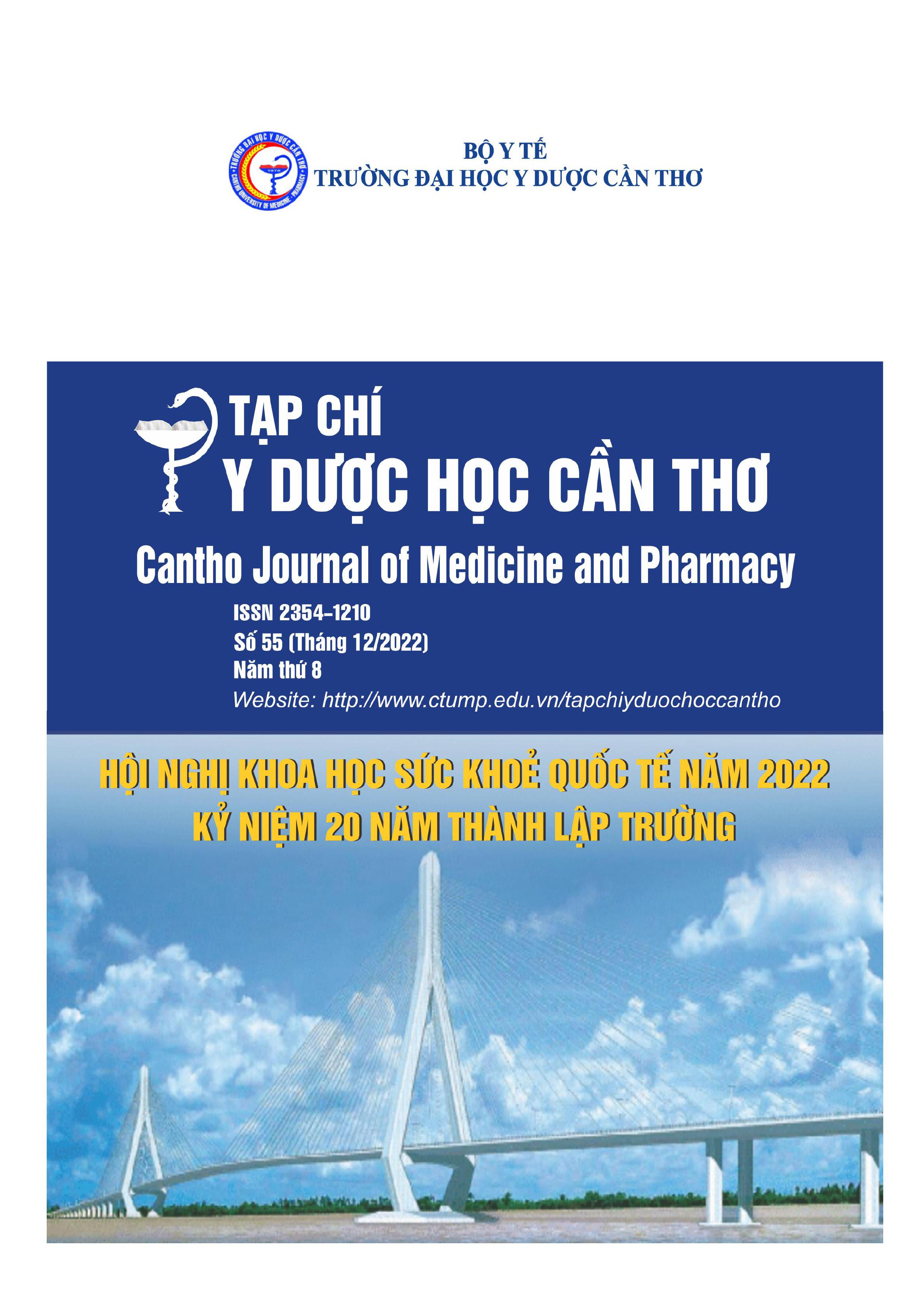CLINICAL CHARACTERISTICS, IMAGES OF VIRTUAL MAGNIFYING CHROMOENDOSCOPY WITH BLI MODE IN PATIENTS WITH COLORECTAL POLYPS AT CAN THO CENTRAL GENERAL HOSPITAL
Main Article Content
Abstract
Background: Colonoscopy is the best method for detecting and treating polyps, helping to reduce the incidence of colorectal cancer by 76-90%. Magnified colonoscopy with BLI staining is used for early detection of colorectal polyps. Objective: To describe clinical characteristics, the images of virtual magnifying chromoendoscopy with BLI of patients with colorectal polyps.
Materials and methods: This was a descriptive study on a total of 100 colorectal polyps of 70 patients at Can Tho Central General Hospital from March 2021 to June 2022. The patients underwent a colonoscopy to detect polyps. Then, polyps were magnified endoscopically stained using the BLI mode according to the JNET classification. Results: Patients with hematochezia accounted for 7.1% compared with no symptoms 37.1%. Location of polyps: Polyps were most common in the rectum (24%) and sigmoid colon (18%). According to the Paris classification, polyp type 0-IIa accounted for the highest 66%, of which 1 polyp type 0- IIa + IIc was recorded. JNET classification for magnified endoscopy with BLI staining, the rate of JNET polyps type 1, 2A, 2B, 3 was 60%, 36%, 3% and 1%, respectively. Conclusion: Colorectal polyps are usually asymptomatic. JNET type I polyps are the most common.
Article Details
Keywords
Magnifying chromoendoscopy, colorectal polyps, Blue Light Imaging (BLI)
References
2. Nguyễn Công Long (2022), Giá trị của phân loại JNET và Kudo đối chiếu với mô bệnh học trong đánh giá polyp đại-trực tràng. Tạp chí Y học Việt Nam, 514(2), tr.164-169.
3. Phạm Bình Nguyên (2021), Nghiên cứu giá trị của nội soi phóng đại, nhuộm màu trong chẩn đoán polyp đại trực tràng, Luận án Tiến sỹ Y khoa, Đại học Y Hà Nội.
4. Thái Thị Hồng Nhung (2019), Nghiên cứu đặc điểm lâm sàng, hình ảnh nội soi, mô bệnh học và đánh giá kết quả cắt đốt polyp đại-trực tràng qua nội soi tại Bệnh viện Trường Đại học Y Dược Cần Thơ. Tạp chí Y Dược học Cần Thơ, 22(23), tr.24-25.
5. Vũ Việt Sơn (2018), Khảo sát phân loại polyp đại trực tràng bằng phương pháp nội soi phóng đại nhuộm màu ảo, Luận văn Thạc sỹ Y học, Đại học Y Hà Nội.
6. Nguyễn Thanh Tùng (2022), Khảo sát polyp đại-trực tràng bằng phương pháp phóng đại BLI theo phân loại BASIC. Tạp Chí Y học Việt Nam, 512(1), tr.271-275.
7. He Xiaosheng (2018), Association Between Risk Factors for Colorectal Cancer and Risk of Serrated Polyps and Conventional Adenomas. Gastroenterology. 155(2), 355-373.e18.
8. Higurashi Takuma (2022), Comparison of the diagnostic performance of NBI, Laser-BLI and LED-BLI: a randomized controlled noninferiority trial. Surg Endosc. 36(10), 7577-7587.
9. Kobayashi Shunsuke (2019), Diagnostic yield of the Japan NBI Expert Team (JNET) classification for endoscopic diagnosis of superficial colorectal neoplasms in a large-scale clinical practice database. United European Gastroenterol J, 7(7), pp.914-923.
10. Long Xiaohua (2015), Clinical and endoscopic-pathological characteristics of colorectal polyps: an analysis of 1,234 cases. Int J Clin Exp Med, 8(10), 19367-73.
11. Nakano Arihiro (2017), Comparison of the diagnostic ability of blue laser imaging magnification versus pit pattern analysis for colorectal polyps. Endosc Int Open, 5(4), E224-e231.
12. Wada Yoshiki (2009), Diagnosis of colorectal lesions with the magnifying narrow-band imaging system. Gastrointest Endosc, 70(3), 522-31.
13. Yamasaki Yasushi (2020), Blue laser imaging and linked color imaging improve the color difference value and visibility of colorectal polyps in underwater conditions. Dig Endosc, 32(5), pp.791-800.
14. Yoshida Naohisa (2022), History, clinical application, and future perspective of narrow band imaging and blue laser imaging. Dig Endosc, 34 Suppl 2, pp.86-90.
15. Zhu Ying (2021), Evaluation of blue laser endoscopy for detecting colorectal non-pedunculated adenoma. Arab J Gastroenterol, 22(2), pp.127-132.


